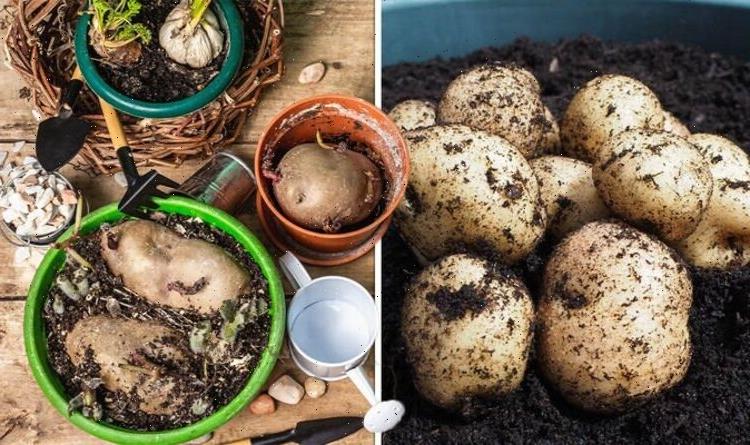
How to plant potatoes in pots – the key method for a perfect crop
03/15/2022Alan Titchmarsh advises on how to plant chit potatoes
We use your sign-up to provide content in ways you’ve consented to and to improve our understanding of you. This may include adverts from us and 3rd parties based on our understanding. You can unsubscribe at any time. More info
Potatoes are a staple ingredient through the spring and summer with plenty of seasonal recipes featuring salad varieties or larger, baked spuds. March is a great time to begin planting them in your own garden, and pots are a great way to raise your own in smaller spaces. Express.co.uk reveals the best way to plant seed potatoes in pots and how to grow a successful crop.
How to plant potatoes in pots
Perhaps one of the easiest crops to grow at home, potatoes offer a high yield harvest and intense flavours from the earthy soil – and they can be planted out in just a few simple steps.
Prepare your seed potatoes
The first step to planting seed potatoes in pots is to chit your early and main crop varieties ahead of planting.
This crucial step is very easy to do using just one empty egg box and a few seed potatoes.
Simply place young potatoes into the small compartments of a cardboard egg box with the pointed side facing downwards.
You should chit your potatoes at least four weeks before planting, leaving them in a cool bright spot indoors to begin sprouting.


Prepare your pots
After four to six weeks, your potatoes should have plenty of purple stubs shooting off them ready to grow into new spuds.
Gather your chitted potatoes and enough pots to grow two seeds per container – 20 litre pots with drainage holes are an ideal size for this high yield crop.
Using a peat-free compost mix, fill the pots with a small layer on the bottom and mix in a fertiliser.
Blood, fish and bone soil mix works well for young potatoes grown in containers.

Position your pots
If you can, position your pots on a raked soil bed and bury the base of them to secure the containers.
This will help to support strong roots if they grow through the holes in the bottom and will keep the soil moist while the potatoes grow.
You can place pots on patios or other hard surfaces, but be wary of drainage issues during the warmer months.
It is a good idea to raise your pots if you plan on keeping them on a patio or decked area to allow extra drainage.
Gardeners’ World recommends leaving potted potatoes in a sheltered spot that gets sun for at least half of the day.
DON’T MISS:
Flowers to plant now for a ‘delicious’ and beautiful ‘cottage’ garden [INSIGHT]
Garden jobs to do in March – from weeding to planting vegetables [LATEST]
Summer bulbs: the three best soil mixes for summer bulbs [REVEAL]

Plant your potatoes
Once your pots are positioned and filled with a small layer of compost, it’s time to place your chitted potatoes into each container.
Start by removing excess shoots from each spud, leaving a maximum of three purple chits per potato.
Place two potatoes in the centre of the pot with the shoots facing upwards, cover with more soil and water well.
There’s often no need to earth-up potted potatoes as they grow so quickly, just make sure they are always covered with soil as they duplicate to avoid a spoiled crop.
Get the latest three-day weather forecast where you live. Find out by adding your postcode or visit InYourArea
Top tips for growing potatoes in pots
Water regularly
Pots like damp conditions, so keep them well hydrated and don’t let the soil dry out as your potatoes grow.
Adjust your planting method based on size
Earlies and second-earlies do best with two potatoes per pot – this will offer smaller spuds but there will be more of them when they are ready to harvest.
Maincrop varieties are best planted with just one potato per pot to create a smaller harvest of larger potatoes.
King Edward and Cara are ideal for main crop potatoes, while Mayan Rose, Pink Gypsy, Coleen and Charlotte are ideal early, and second early crops.
Source: Read Full Article

